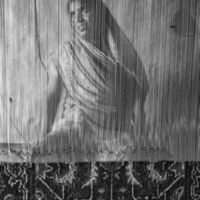
Revathi
There are an estimated almost 8 million people living in modern slavery in India (GSI 2018). India has a population of more than 1.3 billion people, there are still at least 270 million people living on less than US$1.90 per day. While laws, systems and attitudes regarding key 'fault lines' such as the caste system, gender and feudalism are rapidly changing, social change of this depth and scale necessarily takes time. In this context, it is perhaps unsurprising that existing research suggests that all forms of modern slavery continue to exist in India, including forced labour. Young women and girls, often from lower castes, are exploited in Indian spinning mills. They are contracted for three or more years to work in the textile factories of southern India and do not receive minimum wage. At the end of the contract, workers receive a premium, but that is often not the amount promised. This form of exploitation was called Sumangali (Happy Bride), because the premium was supposed to serve as the bride price. While the spinning mills no longer advertise this kind of work under this slogan, the practice continues. Revathy went to work at a spinning mill after his parents could no longer afford her education. She was hired by an agent who offered food, accommodation and salary for an eight-hour working day. However, upon arrival, Revathy was forced to work long hours in unsafe conditions and had her pay deducted for the food and accommodation she was promised. She recounts the working conditions and illnesses workers developed in the mill.

Modern Slavery, Indian Weaver
This image depicts 'Jadawati, a weaver, she is working on a 24 feet carpet which will take her nearly 40 days to complete. As a bonded labourer, she is paid 60 rupees a day, a rate nearly half the minimum wages entitled to her as per the law. The carpet that might sell for 25,000 rupees or more will have earned Jadawati less than 2,500.' The composition of the image gestures towards a sense of imprisonment; the woman is visible behind the fabric weave which acts as an intricate prison. As the rug fabric moves towards completion the figure of Jadawati slowly disappears behind the pattern, as the object of consumption obscures the human cost of production.